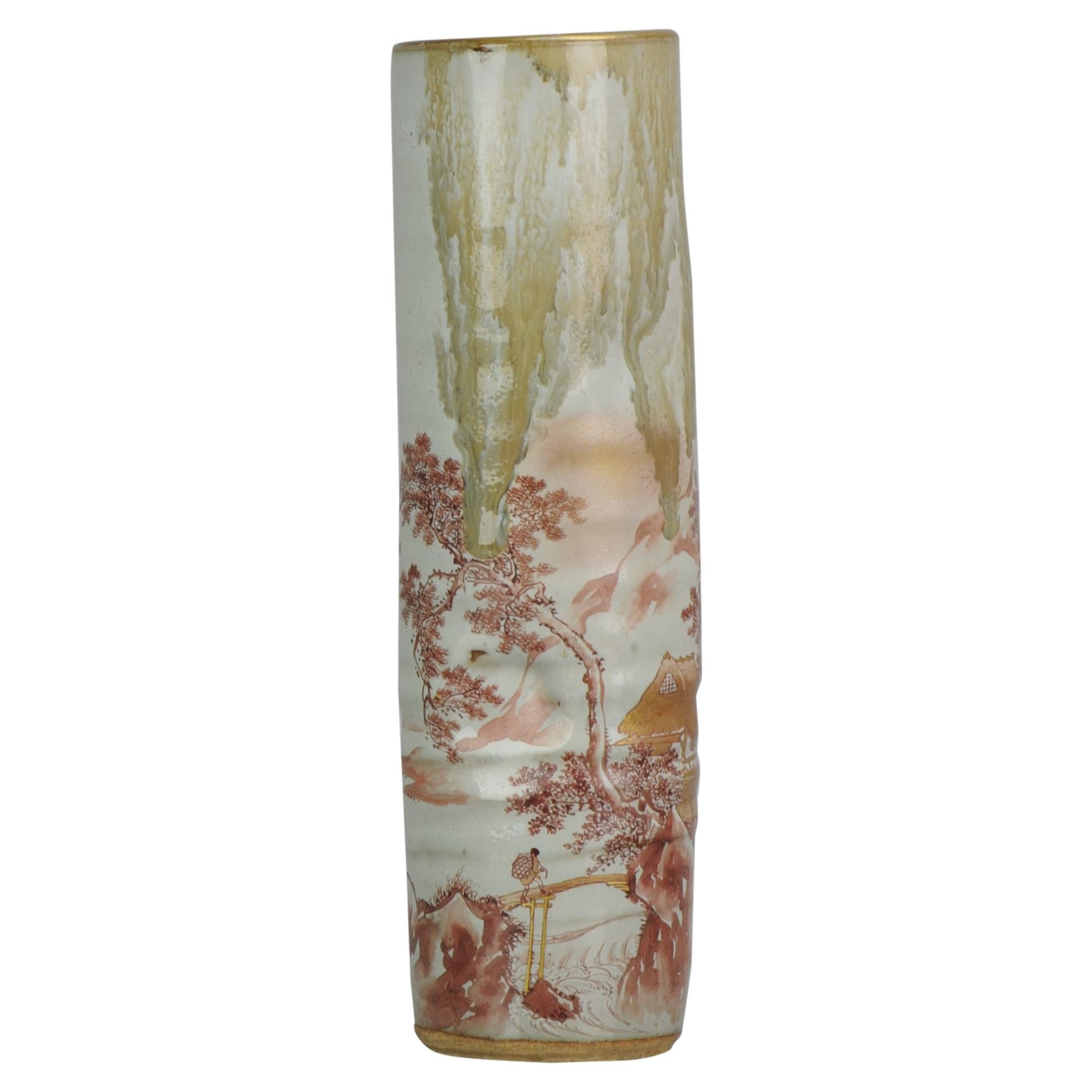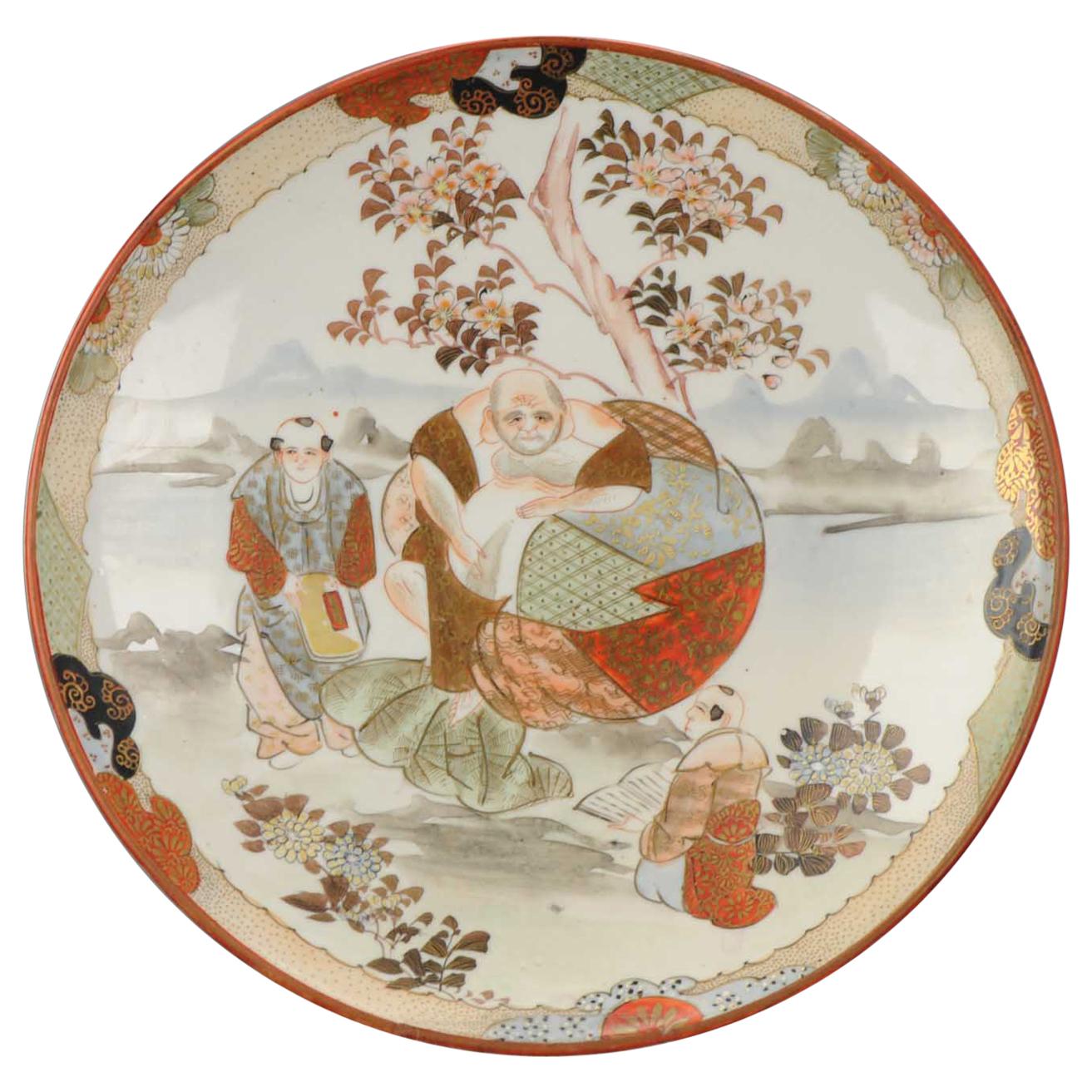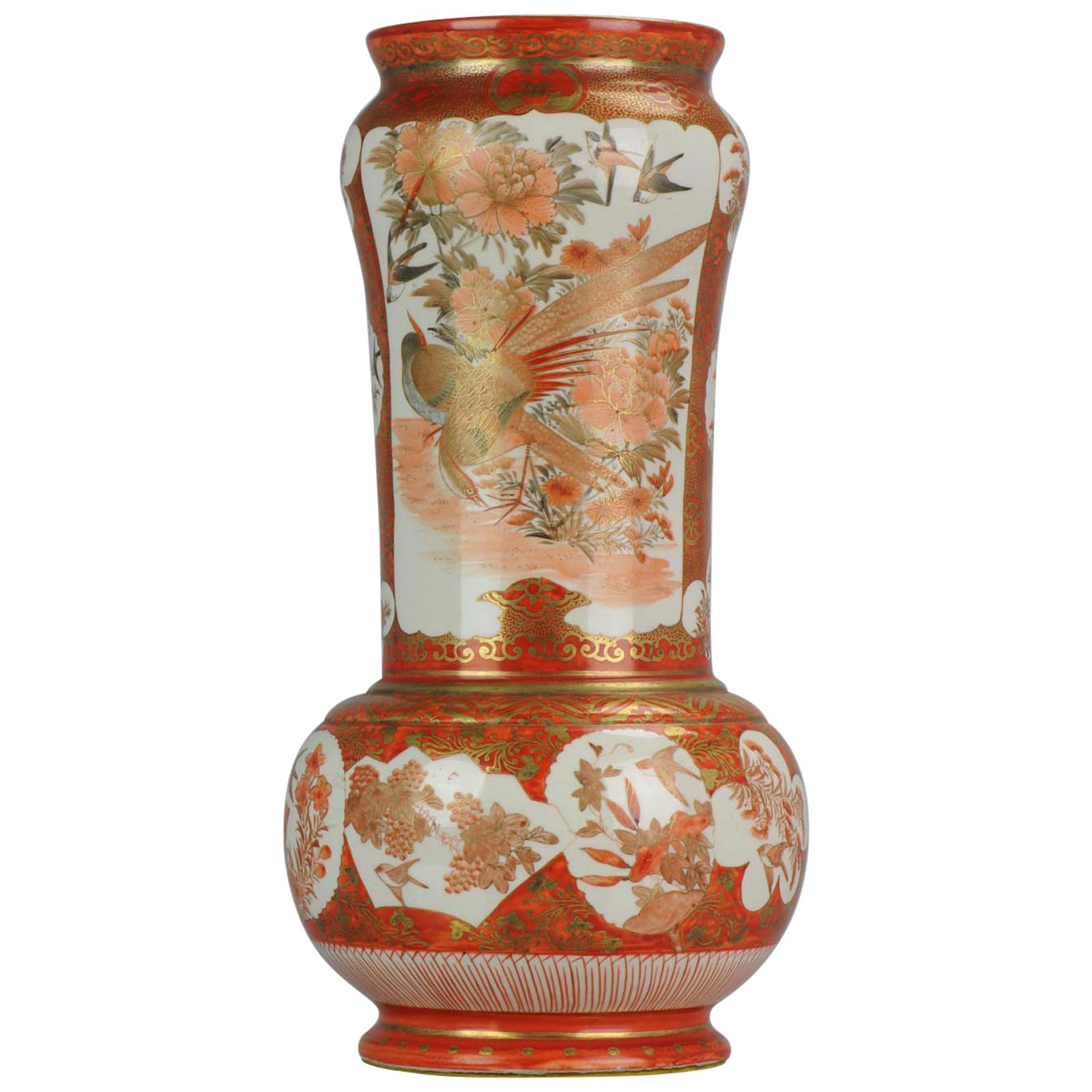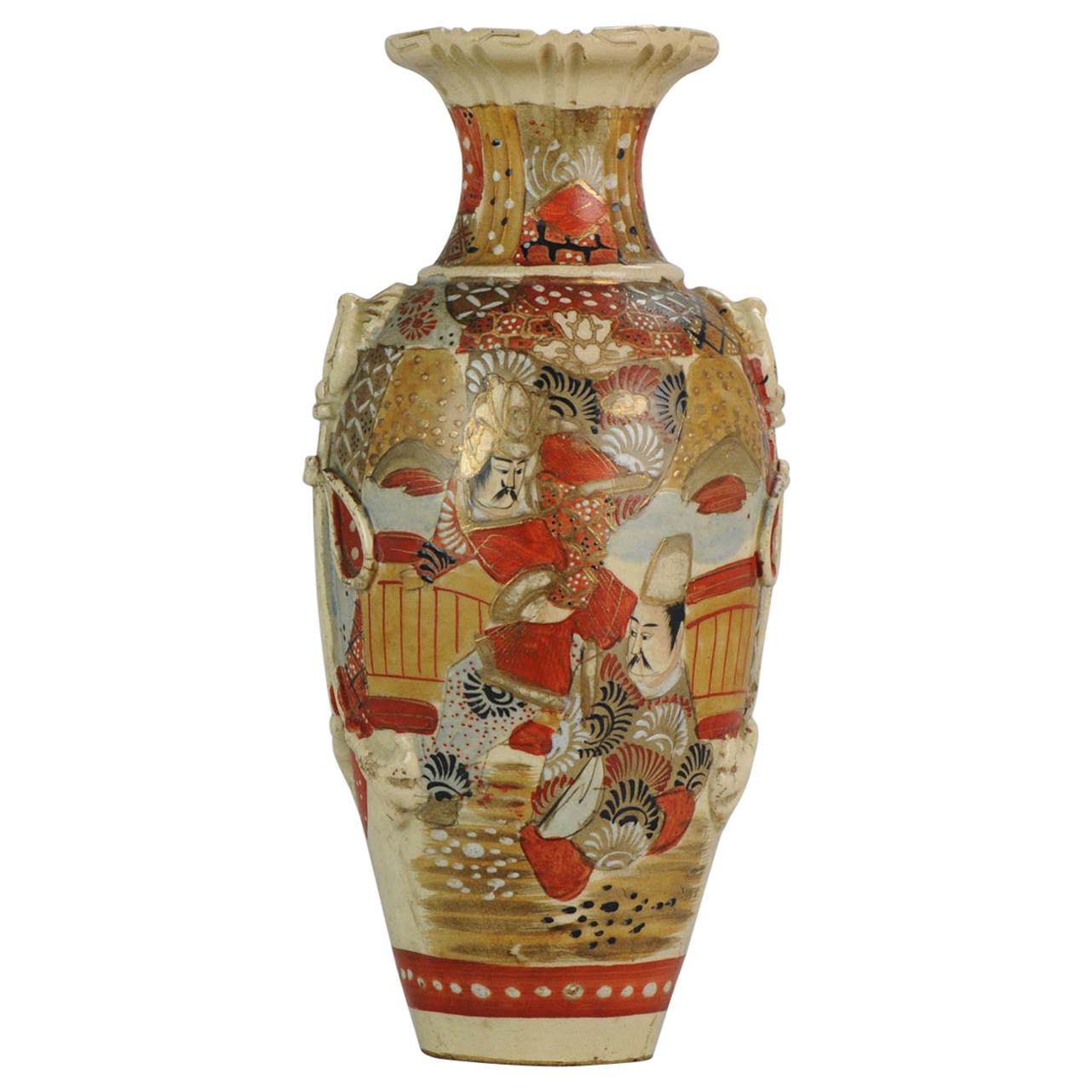Items Similar to Antique Kutani Japanese Floral Vase Marked Plate Japan Top Quality
Want more images or videos?
Request additional images or videos from the seller
1 of 19
Antique Kutani Japanese Floral Vase Marked Plate Japan Top Quality
About the Item
Fabulous vase with a mark on the base. Kutani
Condition
Overall condition some firing flaws in base and some line selections close to rim. 225 x 160mm H x D
Period
Meiji Periode (1867-1912).
- Dimensions:Height: 0.04 in (1 mm)Diameter: 0.04 in (1 mm)
- Style:Meiji (Of the Period)
- Materials and Techniques:
- Place of Origin:
- Period:
- Date of Manufacture:19th Century
- Condition:Minor losses. Minor fading. Overall Condition some firing flaws in base and some line selections close to rim. 225x160mm HxD.
- Seller Location:Amsterdam, NL
- Reference Number:1stDibs: LU4863222990522
About the Seller
5.0
Gold Seller
These expertly vetted sellers are highly rated and consistently exceed customer expectations.
Established in 2015
1stDibs seller since 2019
158 sales on 1stDibs
Typical response time: 11 hours
- ShippingRetrieving quote...Ships From: Amsterdam, Netherlands
- Return PolicyA return for this item may be initiated within 14 days of delivery.
More From This SellerView All
- Unusual Kutani Taniguchi Japanese Wall Vase Marked Red Japan Top QualityLocated in Amsterdam, Noord HollandFabulous vase with a mark Taniguchi on the side. Unusual shape and copper red decoration of a pagode mountainious landscape. With a man walking over a bridge towards the pagode. He i...Category
Antique 19th Century Japanese Meiji Ceramics
MaterialsPorcelain
- Antique 19C Japanese Kutani Vase Marked on Base Figures GardenLocated in Amsterdam, Noord HollandDescription Very lovely piece. With mark Condition Overall Condition Good. Size; 120mm Period Meiji Periode (1867-1912)Category
Antique 19th Century Japanese Meiji Ceramics
MaterialsEarthenware
- Edo Period Japanese Porcelain Plate Antique Ko-Kutani, Top QualityLocated in Amsterdam, Noord HollandA very nice Ko-Kutani plate, circa 1660-1680. See: Shibata collection Condition: Overall condition rim fritting and hairline. Size 205 x 132 mm ...Category
Antique 17th Century Chinese Edo Ceramics
MaterialsPorcelain
- Antique 19th Century Japanese Kutani Plate Marked on Base Figures GardenLocated in Amsterdam, Noord HollandVery lovely piece. With mark and blindmark! Condition Overall condition Perfect. Size: 233mm Period Meiji Periode (1867-1912).Category
Antique 19th Century Japanese Meiji Ceramics
MaterialsEarthenware
- Large Antique 19C Japanese Kutani Vase Marked on Base Birds Swallows GarLocated in Amsterdam, Noord HollandVery lovely piece. With mark at base. Condition: Overall condition crackle lines on body. Size: 335mm high, upper rim 115mm Period: Meiji Periode, (1867-1912).Category
Antique 19th Century Japanese Meiji Ceramics
MaterialsPorcelain
- Antique 19th Century Japanese Kutani Vase Marked on Base Figures GardenLocated in Amsterdam, Noord HollandVery lovely piece. With mark 15-8-19-2-1 Condition Overall condition; Perfect. Size: 320mm Period Meiji Periode (1867-1912).Category
20th Century Japanese Meiji Ceramics
MaterialsEarthenware
You May Also Like
- Japanese Kutani Porcelain Vase, Japan NineteenthLocated in Saverne, Grand EstLarge Kutani porcelain vase with polychrome decoration with gilt highlights, of shishes in reserves on a foliage background. Japan, second half of the 19th century.Category
Antique 19th Century Japanese Ceramics
MaterialsPorcelain
- Antique Japanese Meiji Period Kutani Porcelain Vase by Shoundo / Matsumoto SaheiLocated in Philadelphia, PAA fine antique Japanese Meiji period Kutani porcelain vase. By Matsumoto Sahei/Shoundo. In an aka-e style decorated throughout in iron red with extensive gilt accents. There are cartouches to either side both with branches of red flower with a backdrop of clouds on a white ground. With 2 figural dragon finial handles. Marked to the base with '九谷松雲堂製' which translates as 'Made by Shoundo of Kutani' Matsumoto Sahei (1851-1918) was a master potter who enjoyed success & recognition during his era. In 1876, Sahei received the artist name Shoundo from the nanga painter Tokuda Kansho - he would use that title for nearly 20 years until passing it onto his son as his successor in 1893. Sahei also has the distinction of taking Tokuda Yasokichi I as an apprentice when the latter was 17-years-old. The Tokuda family is perhaps one of the most famous families of Japanese ceramics: Yasokichi I is credited with revitalizing the lost art of ko-Kutani and Yasokichi I, II, & III were all recognized as "Living National Treasures" during their lifetimes. Shoundo exhibited internationally numerous times at the tail end of the 19th Century. The Keisei Isogaya Museum of Art (which specializes in Meiji Kutani) has a vase of Sahei's that was exhibited in the Philadelphia Centennial Exhibition of 1876. He is listed as exhibiting a wide variety of porcelain goods at the 1878, 1889, and 1900 Paris World Exhibitions. He is also listed as exhibiting 'incense burners & porcelain' at the World's Columbian Exhibition held in 1893 in Chicago. The pair of vases that Sahei exhibited in Paris in 1900 bear a strong resemblance to this pair. Simply a wonderfully rare Japanese porcelain...Category
Early 20th Century Japanese Meiji Ceramics
MaterialsPorcelain
- Kutani Japanese Meiji Porcelain Vase Painted with FiguresLocated in Bishop's Stortford, HertfordshireJapanese Meiji porcelain Kutani vase hand painted with decorative and a figural panel dating between 1868 and 1912. The elegantly shaped tall ...Category
Antique 19th Century Japanese Meiji Ceramics
MaterialsPorcelain
- Antique Japanese Meiji Era Porcelain Satsuma Figural Kutani Vase Fu Dogs GeishaLocated in Dayton, OH"Late Meiji era Kutani vase, circa 1903. A beautiful porcelain blue ground centered by an intricate Geisha flanked by gold figural Foo Dog handles. Features a floral and foliat motif throughout. Signed along the base. Kutani ware, Japanese porcelain made in Kaga province (now in Ishikawa prefecture). The name “Old Kutani” refers to porcelain decorated with heavily applied overglaze enamels and produced in the Kaga mountain village of Kutani. The powerful Maeda family had established a kiln there by 1656. The clay bodies used were gray and coarse-grained. On most pieces—dishes and bowls were especially common—a white or blue-white matte glaze was decorated in dark, restrained colours, initially greens, yellows, and some reds, and later purples and dark blues. Some items had cobalt blue decoration under a white glaze. The most noted Old Kutani pieces are “Green Kutani,” in which most of the surface is covered in a green or blue-green glaze to which one or two colours have been added (or the glaze is applied evenly over a design executed in black). The bold designs of Kutani ware drew freely from Chinese ceramics, paintings, and textiles. They are renowned for their rich pictorial ornament executed in lively, intense lines. Owing to local financial problems and difficulties in obtaining the necessary pigments, the Kutani kiln was abandoned some time in the Genroku period (1688–1704). Ceramics production in Kaga enjoyed a renaissance early in the 19th century, however, including the establishment of another kiln at Kutani in the 1820s. In addition to a revival of the styles of Old Kutani ware, there arose a style using gold on a coral-red ground, which was perfected during another spate of activity that began in the 1860s. Technical advances were made and Western-style pigments were adopted, and by the 1890s modern Kutani...Category
Antique Early 1900s Meiji Vases
MaterialsPorcelain
- Antique Meiji Period Kutani Japanese Porcelain Temple JarLocated in Lambertville, NJAntique Meiji period Japanese porcelain temple jar with intricate hand painted decoration and gilt. The jar in Classic Kutani colors with floral and phoenix birds all over the top an...Category
Antique 1880s Japanese Meiji Ceramics
MaterialsPorcelain
- Japanese Kutani Blue Gray Porcelain Vase by Contemporary Master ArtistLocated in Takarazuka, JPExceptional Japanese contemporary decorative porcelain vase, stunningly hand painted in brown on a stunning egg shape body in beautiful background with stripes on a blue/gray gradati...Category
21st Century and Contemporary Japanese Meiji Vases
MaterialsPorcelain
Recently Viewed
View AllMore Ways To Browse
Top Quality Used Furniture
Antique Japanese Japanese
Antique Japanese
Japanese Antique Japanese
Japanese Antique
Antique Furniture Japanese
Japanese Antique Furniture Furniture Japanese
Japanese Antiques Furniture
Floral Vase
Japaneses Ceramics
Japanese Ceramics
Japanese Art And Antiques
Japan Plate
Japanese Plate
Japan Plates
Antique Floral Vase
Antique Floral Vases
Antique Japanese Marks





